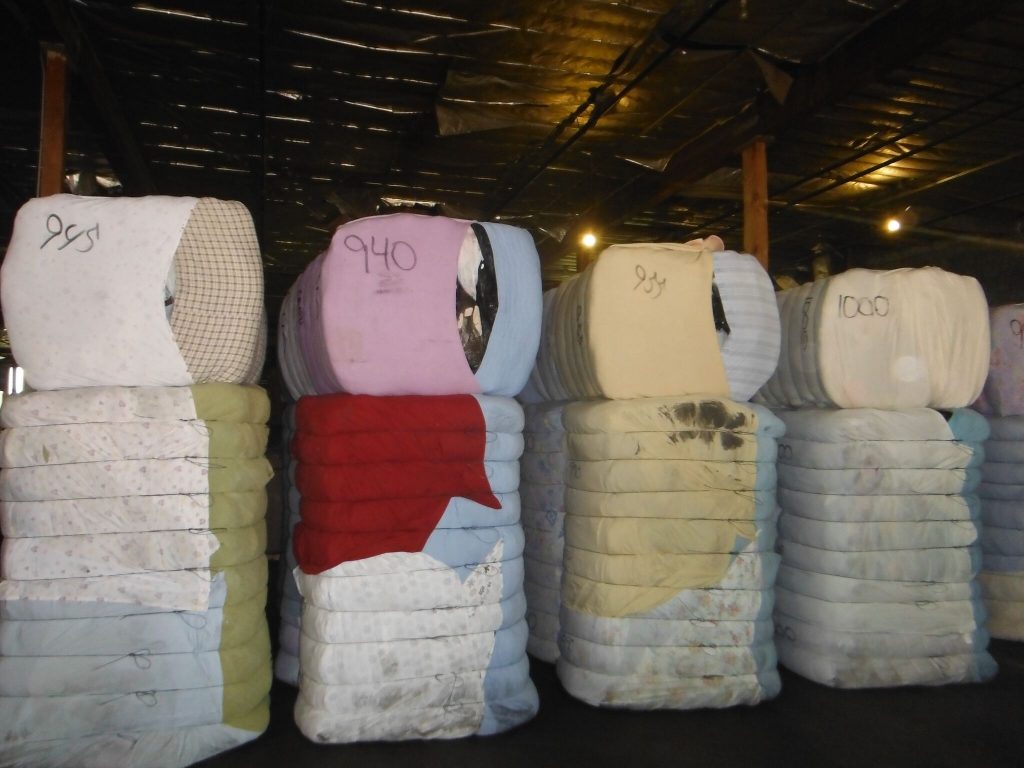In a recent podcast episode of What Makes Us Human, Tasha Lewis (Cornell University assistant professor in the Department of Fiber Science & Apparel Design in the College of Human Ecology) argued that the fashion industry has a huge and detrimental impact on the environment, and not only in the production and manufacturing phases. These effects are also felt after consumption. According to the U.S Department of Agriculture, investing in the used clothing market by selling materials to local populations or exporting these worn materials elsewhere means provides multiple benefits. These include: giving old materials new homes; granting low-income and middle-income populations access to materials they may not otherwise have; employing workers in the trucking and port operations organizations that collect, sort, bale, and export the goods; and perhaps most obviously, diverting materials from landfills. According to the U.S. Environmental Protection Agency, 32 percent of the 12.4 million tons of textile waste generated in 2013 was recovered for export. As a result, this recovery led to a 20 percent drop in total U.S. landfill waste tonnage.
One of the ways that consumers and organizations alike can help address the consumption crisis is through the use and promotion of credential clothing markets. “Credential clothing,” otherwise known as “original clothing,” includes textiles (and other various materials such as shoes) that are initially collected in drop and donation boxes strategically placed in high traffic, and even affluent communities. It is often the case that the original owners of these materials have decided that they no longer have any use for these materials. Experts maintain that in order for materials to qualify as “credential” they must be unsorted, untouched, not graded in terms of their quality, and free of contamination from trash and wet items. It is also paramount that they are in the exact conditions that they were originally found in. These materials, once collected by a textile recycling agency, are then processed as top-grade credential materials. Collectors, generally speaking, much prefer credential clothing to other recycled textiles. The reason for this is because these materials tend to be higher quality (due to being protected in original packaging, having not been opened, and having not been sorted through and selected). As a result, credential clothing, on average, tends to receive a higher price at market.

At Bank & Vogue, we take great care in sourcing, processing and exporting credential clothing from North American charities and for-profit collectors for both domestic and international markets. This process usually involves requiring that our sellers pick up materials at via home pick-up routes, public and neighbourhood drop-off bins and drop-off locations, and in-store donation stations. Once these materials have been collected, our staff then sorts through loose or baled materials with the intent of eliminating any hard items, wet items (such as lotions), trash, or other elements that can damaged those goods that are in the preferred condition.
Bank & Vogue clients trust our company to source quality material for market as well as provide the necessary logistics to get goods. Our team helps clientele move their goods across many locations – across town, state lines and even the ocean with the help of our ever-expanding networks of trucking, shipping, and freight forwarding. Along with these networks, our team is also available to help clients manage their costs, measure and balance their transportable loads, provide estimated delivery dates and times, and arrange for pick-ups. In order to utilize our team’s expertise, please contact us [1-866-613-0719 (North America) or 1-613-747-8465 (International)] or visit us at www.bankvogue.com .







